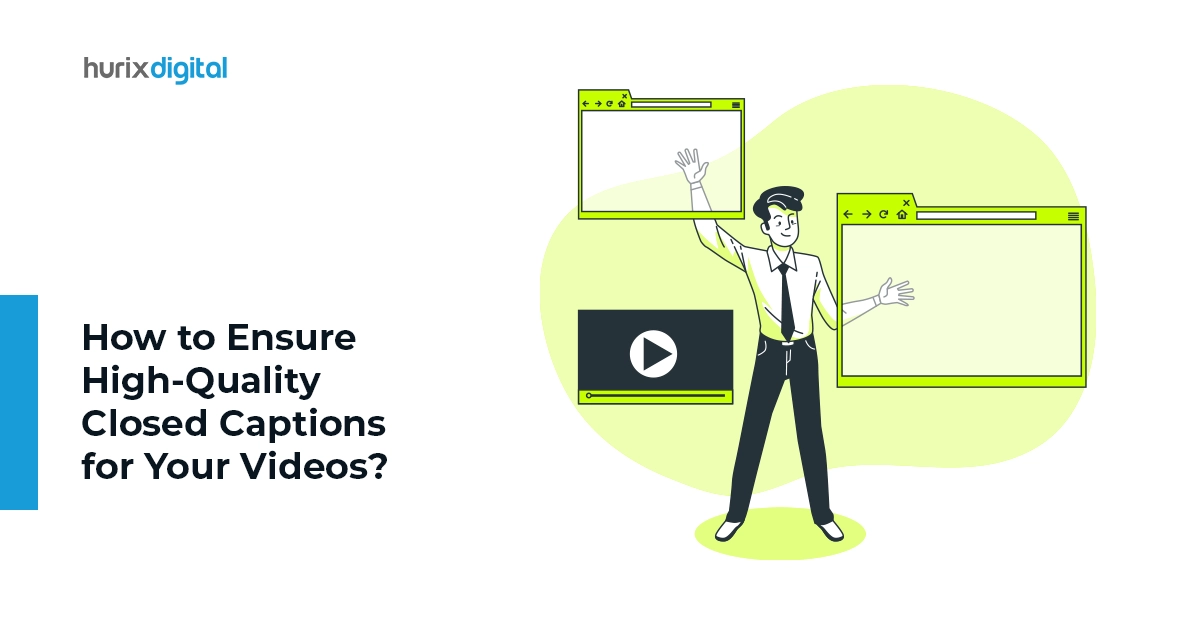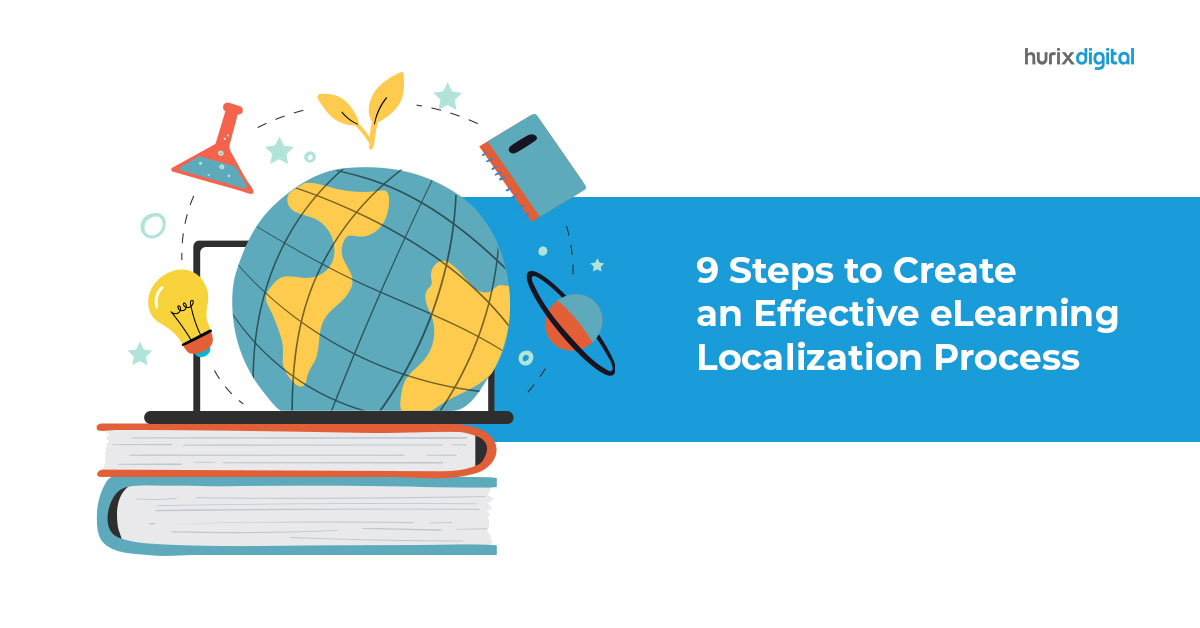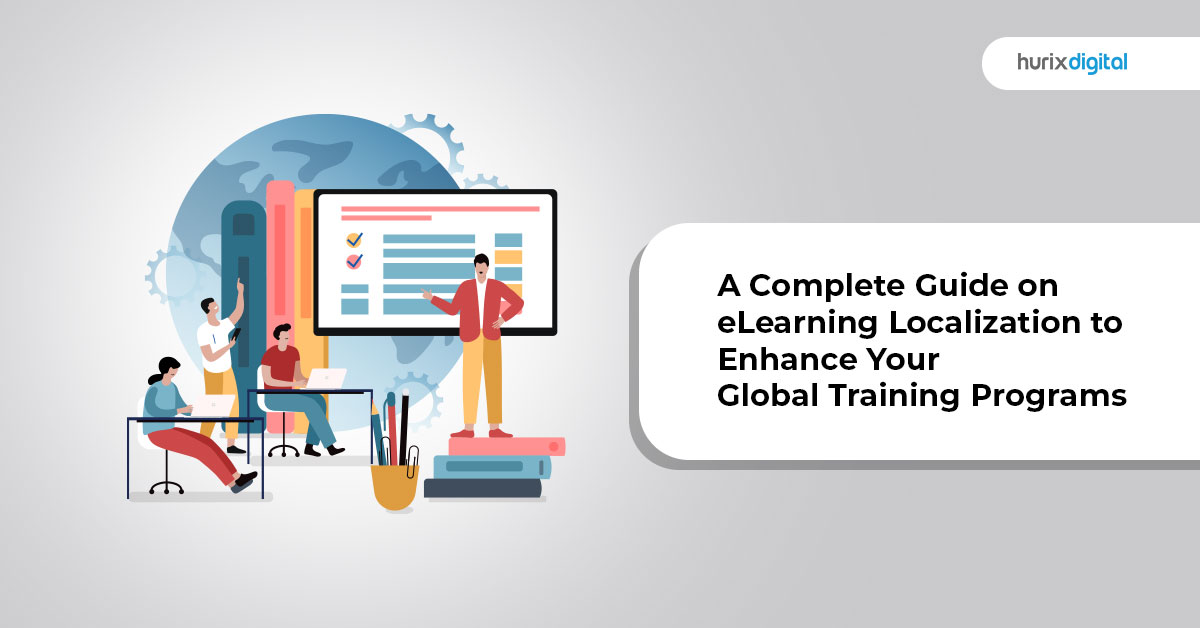
How to Ensure High-Quality Closed Captions for Your Videos?
Summary
Discover best practices for creating high-quality closed captions. This article offers tips for ensuring captions are accurate and effective.
There are over 5% of people around the world who suffer from hearing loss challenges. Closed captions help hearing-impaired people by making the audio or video sources accessible to them.
Does it mean that they should not access the learning material because they are not physically able to access the content? Of course not. To eliminate this difference in capabilities, closed captioning services have come to the limelight.
Closed captions make the video content accessible for everyone irrespective of their physical capabilities. As a result, they enable better focus and engagement for everyone, including people with impaired hearing.
Let’s understand how closed captions in videos can benefit different kinds of people and how to create high-quality closed captions to improve the quality of their life
Table of Contents:
- What are Closed Captioning Services?
- What are the Benefits of Using Closed Captioning Services?
- How to Ensure High-Quality Closed Captioning Services?
- Wrapping up
What are Closed Captioning Services?
Closed captioning services provide accurate and clear captions based on the videos or live streams to make the video content accessible in text to everyone.
To make sure that hearing-challenged people can easily access the ever-evolving landscape of multimedia content, closed captions play a pivotal role. This aids them in understanding video content without any restrictions on physical capabilities.
Furthermore, closed captions cater to the needs of the general people. They can understand videos available in other languages with the help of easy-to-read transcribed content. Therefore, the quality of the closed captions must be unmatched to cater to their needs.
Also Read: Accessibility and the Need for Closed Captioning in Educational Videos
What are the Benefits of Using Closed Captioning Services?
Closed captions are understood as effective and efficient to cater to the needs of people belonging to different walks of life. Closed captioning services ensure that your content has high-quality captions, making it accessible to a wider range of people.
Some common benefits of closed captions for videos include:
1. Ensures Video Accessibility for Everyone
Closed captioning service keeps people suffering from hearing impairments ahead of time.
Furthermore, it enhances the overall interactivity of people who want to access the content in noise-sensitive environments via both text and audio.
2. Elevates Learning Experiences
Students get greater flexibility to comprehend the meaning of their university’s intellectual lecture videos with closed captions.
They can revisit the videos and easily find what they are looking for through the captions. This helps enhance their grasping power.
Sometimes people prefer reading texts over watching videos to grasp minute details of the content efficiently.
3. Improves Video SEO Ranking
Video content creators can index their video SEO with the help of closed captions.
- They can place the target keywords to attract the right audience and boost the organic growth of their video channel.
- They can also increase their website’s visibility by incorporating skimmable and discoverable closed captions for their videos. Ultimately, this will generate more revenue for them
4. Multilingual Benefits
Another stellar benefit of closed captions is that the video content creator is not limited to only one language or dialect.
They can target audiences from a wider range of languages by transcribing captions in various languages for their videos.
5. Enhances Viewers’ Engagement
Closed caption videos enhance viewers’ engagement as they break barriers between listeners and speakers which are often created by the dialect, tone, and language.
By providing viewers with high-quality closed captions, video creators or caption creators ensure that even minute facts, statistics, or other valuable information are understood by listeners.
6. Provides Legal Protection
The Americans with Disabilities Act (ADA) provides certain standards to ensure that people with disabilities can access spaces, including digital ones.
Making content accessible by adding closed captions, alt texts, and other features can ensure that these standards are followed.
How to Ensure High-Quality Closed Captioning Services?
High-quality closed captions ensure that they are accessible and suit the needs of a vast audience, including people suffering from hearing disabilities.
Go over the following paragraphs to learn how to ensure high-quality benchmarks in closed captions:
1. Use Human-Generated Captions
In today’s competitive digital landscape, many easy-to-use and intuitive Automated Speech Recognition tools for content generation are available. However, human-generated captions are preferred.
- They are less mechanic and more power-packed with emotions, interaction, creativity, engagement, and empathy.
- Though AI or robotized captions are cost-effective, they can never replicate human creativity because can’t connect to the readers.
Hence, it is vital to avail of human-generated closed captioning services for their high-end quality.
2. Review Your Closed Captions
Reviewing your closed captions is an essential step to guarantee high-end quality and accuracy. It will elevate the standard of the captions for your video.
Additionally, if the content is in real-time, the closed captions should be exact, accurate, and engaging. AI-powered tools can be carefully integrated to procure more accurate results.
3. Ensure Accurate Speaker Identification
Speaker identification is an integral element of high-quality closed caption capabilities that enhance video accessibility.
Go over the following pointers to know how to enable it:
- The speaker’s name should be in capital letters with a colon and a space.
- In case the speaker’s name is not specified, use terms such as Speaker, Voiceover, Narrator, Interviewer, etc.
- In case the actor is portraying another character, indicate the character of that actor in a precise manner.
4. Choose the Right Layout
The layout of the closed captions should be compatible with every device so that people with hearing loss can easily read the translation on their device’s screen.
Ensure that you check previews of your video on different screen size configurations before you publish them.
Check out EXCLUSIVE: HurixDigital Develops 7000 Minutes of Audio Recording with Closed Captions
Wrapping Up
In a nutshell, the demand for closed captioning services has been rising in today’s competitive world. Businesses of all sizes need it to target potential audiences and to boost their websites’ visibility.
Investing in closed captioning services will ensure legal compliance and help your content maintain good accessibility practices.
Several providers offer closed captioning services. Hurix Digital is one such provider that will ensure that your content is optimized to become more discoverable, giving it a competitive edge.
Contact us today for further details on digital accessibility services.

Vice President – Digital Content Transformation. He is PMP, CSM, and CPACC certified and has 20+ years of experience in Project Management, Delivery Management, and managing the Offshore Development Centre (ODC).







